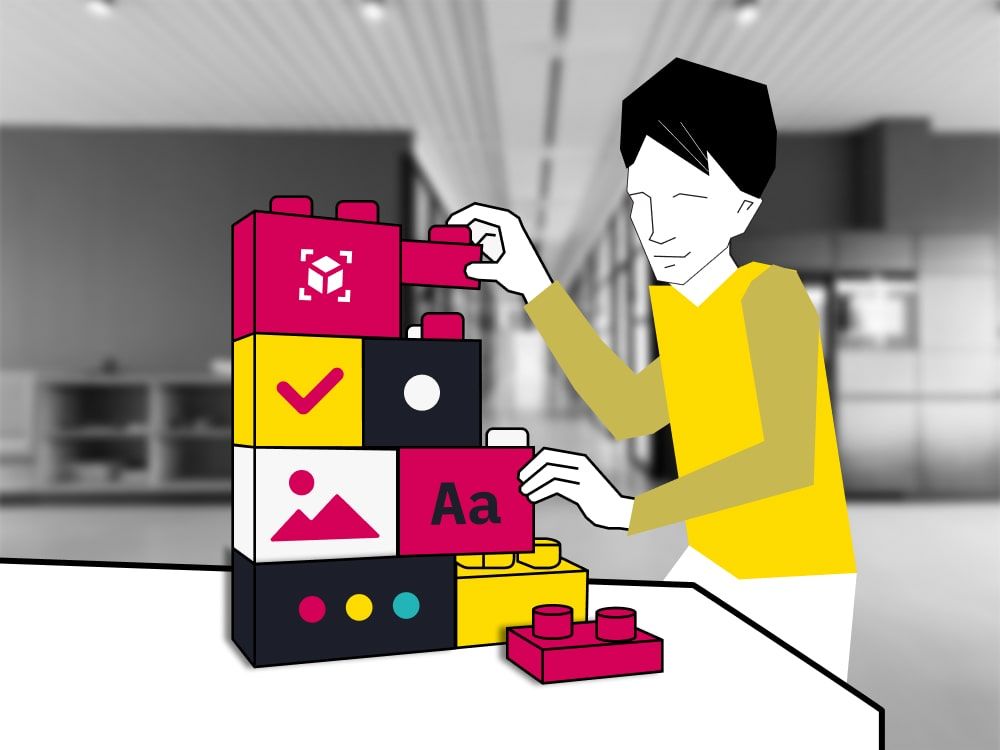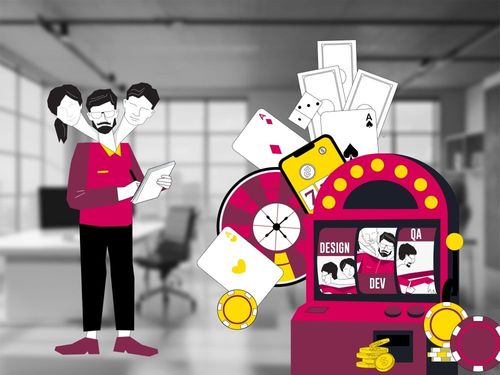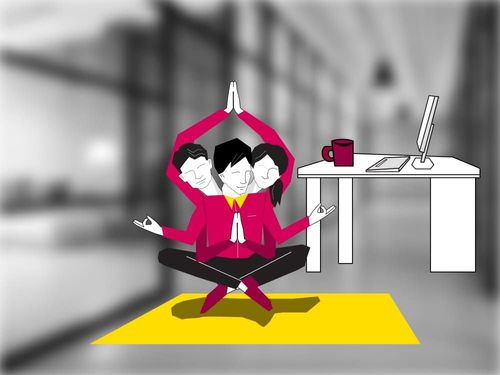
Does your brand feel like a patchwork? Different shades of blue, three headline fonts, and the website is like a graveyard of one-off campaigns. Rebranding may sound risky, but maybe you don’t need a full overhaul.
What you need is a brand system—something that can ship, version, and scale. Modular rebranding turns your brand into building blocks: tokens, components, rules, and automated processes. The result? Fewer approvals, less rework, quicker launches.
What is modular rebranding?
“The first rule of complexity is more = less. More features mean more complexity, and therefore it’s harder for users to adapt and likely results in less active users.”
― Uri Levine, Fall in Love with the Problem, Not the Solution
Applied to branding, “modular” means separating your core brand assets (logo, colors, fonts, motion) from the flexible content and rules that adapt to markets and campaigns. The teams use blocks instead of reinventing from scratch. Rules and automation keep everything consistent, even when you move fast.
Think of your brand like a product with a clear architecture.
- Tokens = the smallest variables (colors, type scale, spacing, motion timings).
- Components = reusable blocks (logos/lockups, patterns, icon kits, voice modules, email blocks).
- Rules & interfaces = when, where, and how each component is used (like API contracts).
- Pipelines = how assets are produced, checked, approved, and shipped (your CI/CD for brand).
- Versioning = changes are released as v1.2.0 or v2.0.0 with migration notes.
This approach doesn’t make everything look the same — it makes everything work together. Your brand stays recognizable, but can be localized, iterated, and scaled without chaos.
Examples of successful implementation of a modular design system:
- Monzo (mobile-first bank, product exploding with features). Modular design reduced production time and review cycles, so customers see one coherent Monzo, which supports trust and adoption of new features.
- Wise (cross-border money transfer) faster market rollouts with fewer legal/design iterations; partners plug in co-brand assets safely; global brand stays unmistakable while local teams meet regulations.
- Figma (software for design creation) hours instead of days to produce on-brand assets; agencies/internal teams scale output without visual drift; lower production cost per asset, and a tighter attendee experience across channels.
The process works step by step:
Audit your assets → define tokens → build a component kit → add rules → set governance → automate with pipelines → pilot and roll out → train teams → measure and improve.
Step 0 — Align on outcomes
Agree on goals, decision owners, and what “success” means.
Define top channels, must-keep assets, metrics (time-to-asset, consistency, legal rework).
Create 6–12 week roadmap for owners + manage access to worktolls (Figma/GitHub/DAM).
Step 1 — Audit like a codebase
You can’t fix what you can’t see.
Collect every logo, color, font, template, motion, and tone sample. Tag duplicates & drift. As a result, you’ll receive the Brand Debt Map, “quick wins,” and risk flags (accessibility and legal).
Step 2 — Extract brand tokens
Tokens remove guesswork and lock consistency.
Do: Define color roles (with contrast grades), type scales, spacing, radii, and motion timings.
Result: Token JSON + Figma styles + short usage notes (do/don’t).
Step 3 — Build the component kit
Teams should assemble, not reinvent.
Do: Create logo lockups, grid, pattern system, icons/illustrations, voice modules (headline/CTA).
Result: Ready-to-use blocks for web, app, email, social, print—plus examples.
Step 4 — Add market interfaces
Localize safely without brand drift.
Do: Set presets for languages/scripts, currency/number/date formats, legal footers, co-brand rules, tone sliders (formal ↔ casual).
Result: Region/partner parameter table + switchable presets.
Step 5 — Governance & versioning
Control changes without slowing down.
Do: Use semantic versioning (v1.2.0 = token tweak; v2.0.0 = breaking change), approvals, release notes, migration guides.
Result: Brand Operating Model (roles, RACI, change process, SLAs).
Step 6 — Wire brand CI/CD
Automation beats policing.
Do: Set up auto-exports, file-naming rules, color/font/contrast linters, single source of truth (no final_final_v7.pdf).
Result: Pipelines + checklists + optional asset CDN.
Step 7 — Pilot with feature flags
Test safely, learn fast.
Do: Try a new pattern/tone in one region/channel; A/B if possible.
Result: Pilot report on KPIs (time-to-asset, approval loops, recall, CTR/CPA) + clear roll-forward/rollback rule.
Step 8 — Roll out like engineers
Reduce risk on launch.
Do: Staging (internal), Canary (1 region/partner), GA (global), with a sunset plan for legacy assets.
Result: Rollout runbook + asset replacement plan + co-brand partner pack.
Step 9 — Train & hand over
Systems win only if people use them.
Do: 60-min live training + 10 short Looms; office hours; “where to find X” guide.
Result: Searchable docs, templates, FAQs, and contact routes.
Step 10 — Prove value & iterate
Keep the system healthy.
Do: Track consistency score (lint pass rate), time-to-asset, legal rework, recall of distinct assets, and key channel KPIs.
Result: Dashboard + next-sprint backlog (v1.1.0), with concrete improvements.
The outcome?
A system that saves time, reduces risk, and keeps your brand coherent no matter how fast you scale.
At Smartexe, we helped companies build modular brand systems that actually work in practice. If you’re looking for rebranding or need design support, drop us a message.
Let’s discuss how our designers can help you streamline your processes, while maintaining your brand's sharpness and consistency.



















